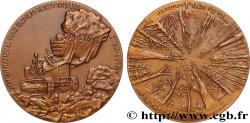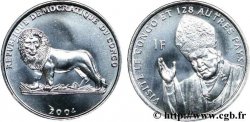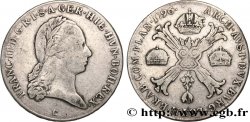180.00 €
Menge
In den Warenkorb

Type : Médaille “Faux Shekel” juif copiant celui de Jérusalem
Datum: n.d.
Name der Münzstätte / Stadt : Israël
Metall : Legierung
Durchmesser : 32,5 mm
Stempelstellung : 12 h.
Gewicht : 8,67 g.
Rand lisse
Punze : sans poinçon
Kommentare zum Erhaltungszustand:
Patine sombre hétérogène présentant des taches d’oxydation et quelques concrétions
Vorderseite
Titulatur der Vorderseite LÉGENDE HÉBRAÏQUE.
Beschreibung Vorderseite Calice au centre de la légende.
Rückseite
Titulatur der Rückseite LÉGENDE HÉBRAÏQUE.
Beschreibung Rückseite Motif végétal dérivant de la branche de grenade à trois bourgeons.
Kommentare
Cette médaille est à rapprocher du Méreau du pélerinage de Gorlitz aux XV et XVIe siècles.
Les faux shekels ont une histoire longue et mystérieuse. Ils étaient sans doute d'abord fait en Europe et au Proche-Orient dès le Moyen-Âge, vendus aux pèlerins (crédules) de retour ou sur leur chemin vers la Terre Sainte.
Ces objets ont plus tard été utilisés comme "jetons" dans certaines confréries juives, chrétiennes et maçonniques.
http://www.theshekel.org/article_false_shekels.html.
This medal is similar to the Gorlitz Pilgrimage Medal of the 15th and 16th centuries. Fake shekels have a long and mysterious history. They were probably first made in Europe and the Near East as early as the Middle Ages, sold to (gullible) pilgrims returning or on their way to the Holy Land. These objects were later used as \\\"tokens\\\" in certain Jewish, Christian, and Masonic brotherhoods. http://www.theshekel.org/article_false_shekels.html
Les faux shekels ont une histoire longue et mystérieuse. Ils étaient sans doute d'abord fait en Europe et au Proche-Orient dès le Moyen-Âge, vendus aux pèlerins (crédules) de retour ou sur leur chemin vers la Terre Sainte.
Ces objets ont plus tard été utilisés comme "jetons" dans certaines confréries juives, chrétiennes et maçonniques.
http://www.theshekel.org/article_false_shekels.html.
This medal is similar to the Gorlitz Pilgrimage Medal of the 15th and 16th centuries. Fake shekels have a long and mysterious history. They were probably first made in Europe and the Near East as early as the Middle Ages, sold to (gullible) pilgrims returning or on their way to the Holy Land. These objects were later used as \\\"tokens\\\" in certain Jewish, Christian, and Masonic brotherhoods. http://www.theshekel.org/article_false_shekels.html








 Berichten über einen Fehler
Berichten über einen Fehler Die Seite drucken
Die Seite drucken Teilen meiner Auswahl
Teilen meiner Auswahl Stellen Sie eine Frage
Stellen Sie eine Frage Einlieferung/Verkauf
Einlieferung/Verkauf
 Details
Details















